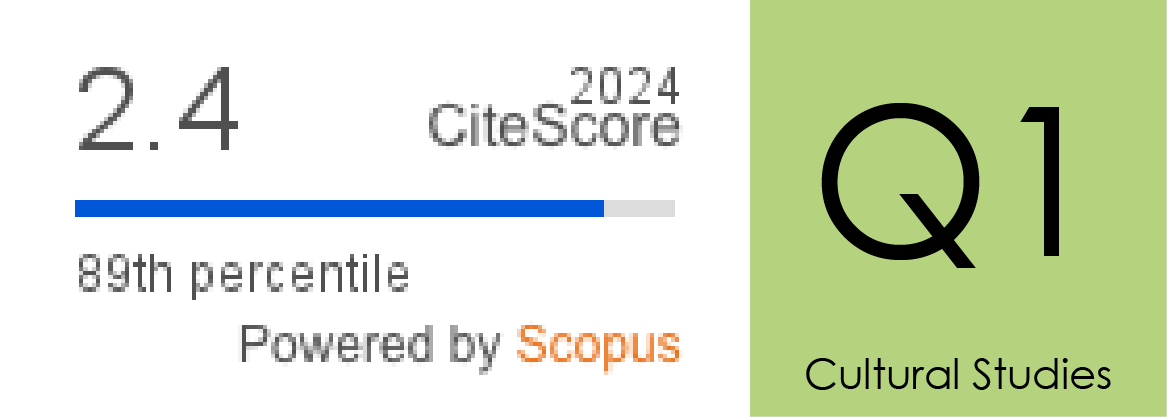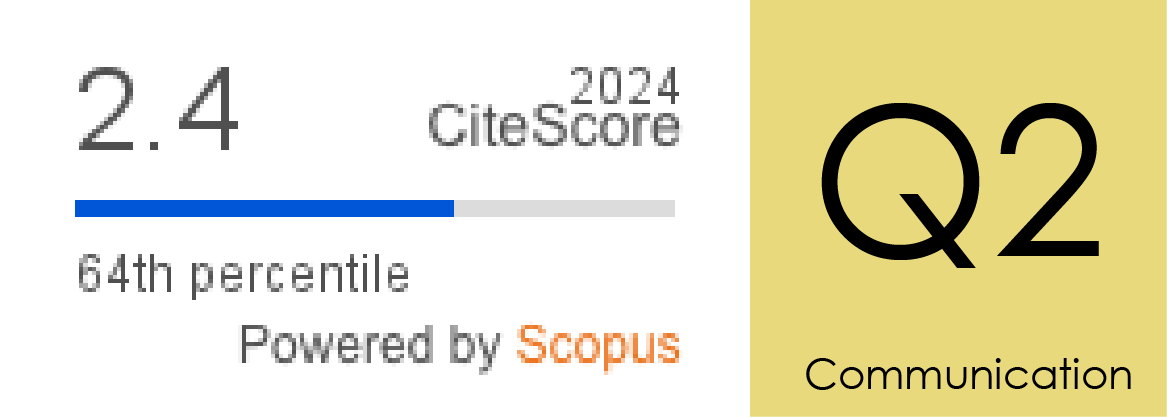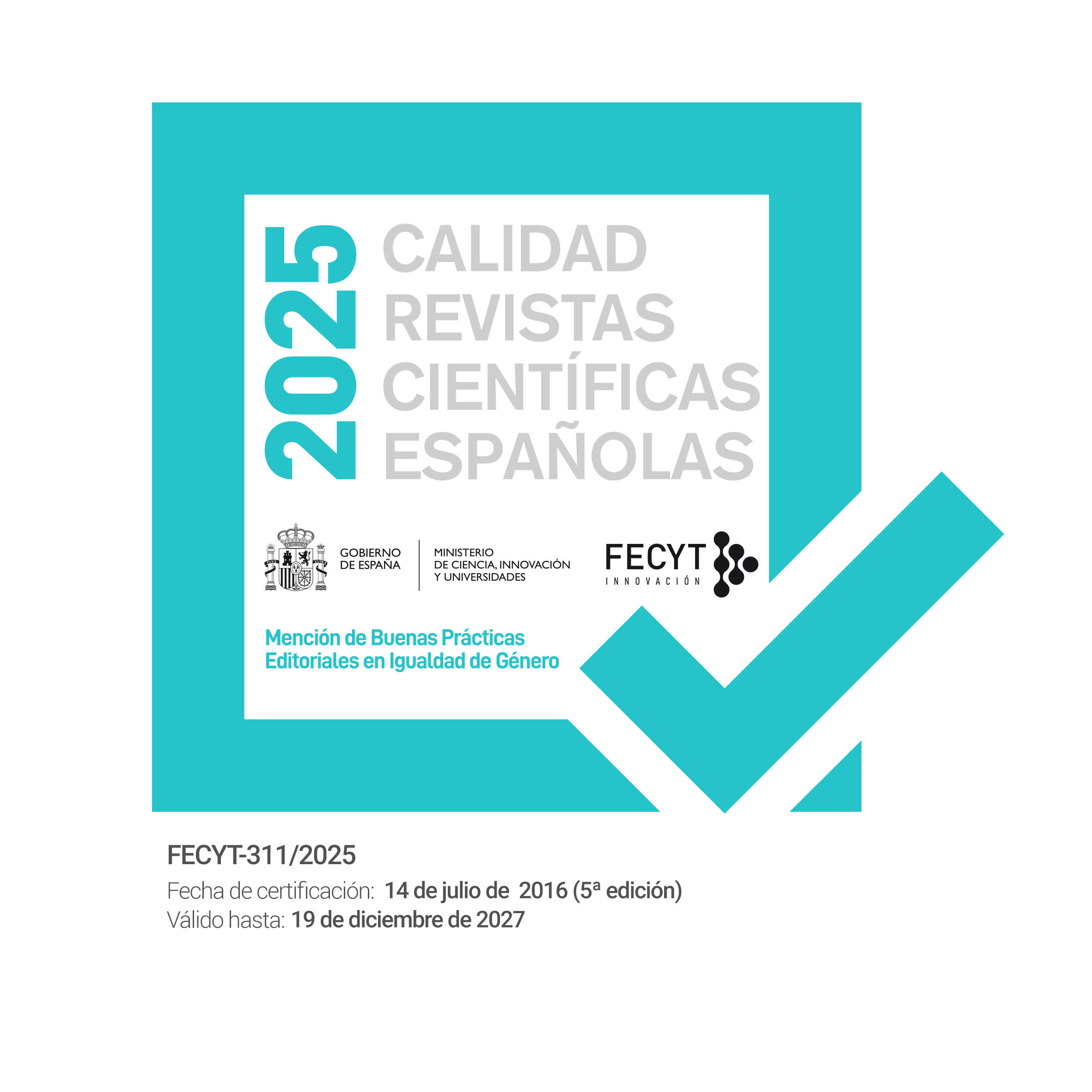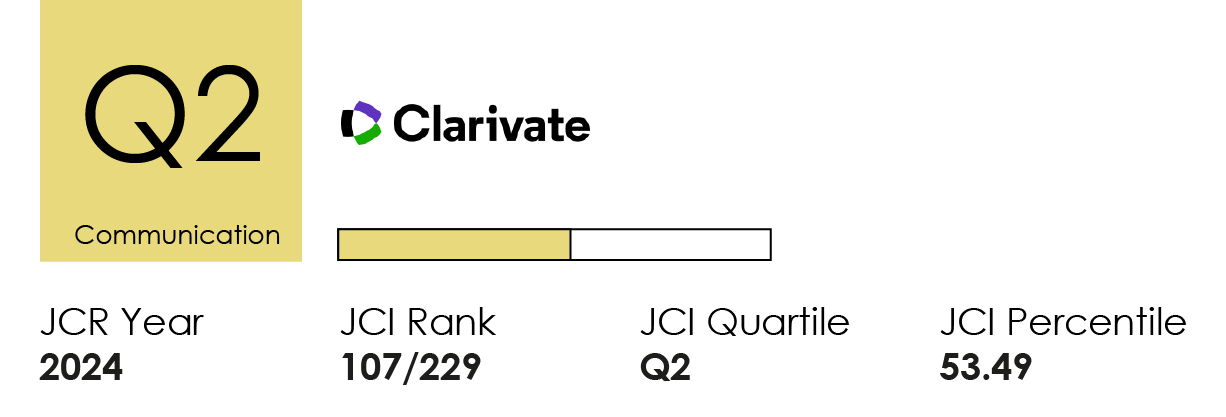La narrativa del político-influencer y su fandom. El caso de Isabel Díaz Ayuso y los ayusers en Instagram
DOI:
https://doi.org/10.14198/MEDCOM.25339Palabras clave:
Comunicación política; celebrity politics; Instagram; influencer marketing; fandom; Isabel Díaz AyusoResumen
La influencia de la cultura de los medios sociales en la comunicación política ha propiciado la aparición de la narrativadel político-influencer como la adaptación del político-estrella al medio. El trabajo analiza la comunicación de la política Isabel Díaz Ayuso (IDA) y la de su fandom (ayusers) en Instagram durante un periodo no electoral (junio 2021-junio 2022). Para ello, se realizó un análisis de contenido cuantitativo y cualitativo sobre el perfil oficial de IDA y las cinco cuentas ayusers con más seguidores. Los resultados muestran que IDA utiliza estrategias características del discurso publicitario y comercial de los influencers, encontrándose una mayor presencia de marcas y celebridades que de representantes políticos o información sobre sus propias iniciativas de gobierno. La decisión de mostrar contenidos personales y comerciales, siguiendo la lógica de la humanización del político, es además premiada por sus seguidores, que manifiestan más engagement hacia estas publicaciones. En paralelo, su fandom centra sus publicaciones en ensalzar el atractivo físico de IDA y el ataque político a la izquierda (regional y nacional). Así, la comunicación de IDA y los ayusers funciona de modo complementario en Instagram: la política se muestra siempre activa y positiva, de acuerdo con la lógica del medio y los mandatos culturalmente asociados al género femenino, mientras que su fandom incorporalos contenidos políticos y de ataque. El trabajo avanza en el conocimiento sobre las narrativas de humanización del político en los medios sociales, así como en la creciente importancia del fandom en un contexto de campaña permanente.
Citas
Abidin, C. (2015). Communicative intimacies: Influencers and Perceived Interconnectedness. Ada: A Journal of Gender, New Media, and Technology, 8.
Abidin, C. (2017). #Familygoals: Family influencers, calibrated amateurism, and justifying young digital labor. Social Media and Society, 3(2). https://doi.org/10.1177/2056305117707191
Anderson, T. (2012). Still kissing their posters goodnight: Female fandom and the politics of popular music. Journal of Audience & Reception Studies, 9(2), 239-264. https://acortar.link/OwymE1
Barnes, R. (2023). Fandom and Polarisation in Online Political Discussion: From Pop Culture to Politics. Palgrave Macmillan.
Barranquero, A., y Eiroa, M. (2017). Métodos de investigación en la comunicación. Síntesis.
Baym, N. K., & Boyd, D. (2012). Socially mediated publicness: An introduction. Journal of broadcasting & electronic media, 56(3), 320-329. https://doi.org/10.1080/08838151.2012.705200
Bellido-Pérez, E., y Gordillo-Rodríguez, M. T. (2022). Elementos para la construcción del escenario del candidato político en Instagram. El caso de las elecciones generales del 28 de abril de 2019 en España. Estudios sobre el Mensaje Periodístico, 28(1), 621-637. https://dx.doi.org/10.5209/esmp.75870
Belver, M., y Roces, P. (20/05/2022). Ayuso es proclamada presidenta del PP de Madrid agradeciendo a Feijóo que no le haya puesto "tutelas". El Mundo. https://tinyurl.com/3m85fcpc
Brands, C., Kruikemeier, S., & Trilling, D. (2021). Insta(nt)famous? Visual self-presentation and the use of masculine and feminine issues by female politicians on Instagram. Information, Communication & Society, 24(14), 2016-2036. https://doi.org/10.1080/1369118X.2021.1962942
Caro-Castaño, L. (2022). Jugando a ser influencers: un estudio comparativo entre jóvenes españoles y colombianos en Instagram. Communication & Society, 35(1), 81-99. https://doi.org/10.15581/003.35.1.81-99
Casero-Ripollés, A. (2018). Research on political information and social media: Key points and challenges for the future. Profesional de la información, 27(5), 964–974. https://doi.org/10.3145/epi.2018.sep.01
Casero-Ripollés, A. (2022). Political Influencers. In A. Ceron (Ed.), Elgar Encyclopedia of Technology and Politics (163-166). Edward Elgar.
Chadwick, A. (2017). The hybrid media system. Oxford University Press.
Cotter, K. (2019). Playing the visibility game: How digital influencers and algorithms negotiate influence on Instagram. New Media & Society, 21(4), 895–913. https://doi.org/10.1177/1461444818815684
Dean, J. (2017). Politicising fandom. The British Journal of Politics and International Relations, 19(2), 408–424. https://doi.org/10.1177/1369148117701754
Driessens, O. (2013). The celebritization of society and culture: Understanding the structural dynamics of celebrity culture. International Journal of Cultural Studies, 16(6), 641–657. http://dx.doi.org/10.1177/1367877912459140
Duffy, B.E. (2017). (Not) Getting Paid to Do what You Love: Gender, Social Media, and Aspirational Work. Yale University Press.
Ekman, M., & Widholm, A. (2017). Political communication in an age of visual connectivity: Exploring Instagram practices among Swedish politicians. Northern Lights, 15, 15–32. https://doi.org/10.1386/nl.15.15_1
Gandini, A., Ceron, A., & Lodetti, P. (2022). Populists or Influencers? The Use of Facebook Videos by Populist Leaders. International Journal of Communication, 16, 21. https://acortar.link/SbswVn
García de Blas, E. (09/11/2021). Casado impone silencio sobre Ayuso sin ceder en su pugna. El País. https://tinyurl.com/56bxvznc
García-Beaudoux, V. (2015). Estereotipos de género, comunicación política y liderazgo femenino: ¿para qué sirve la táctica de reencuadre? Más Poder Local, 25, 6-9. https://acortar.link/j8sM3k
García-Beaudoux, V., D’Adamo, O., Berrocal Gonzalo, S., y Gavensky, M. (2020). Estereotipos y sesgos en el tratamiento de candidatas y candidatos en programas televisivos en las elecciones legislativas de Argentina en 2017. Revista Latina de Comunicación Social, 77, 275-293. https://doi.org/10.4185/RLCS-2020-1458
García Beaudoux, V., D’Adamo, O., y Bruni, L.A. (2022). Una comparación de los estilos de liderazgo comunicados por Ada Colau e Isabel Díaz Ayuso. Más Poder Local, 48, 8-24. https://doi.org/10.56151/1589.7542
Goffman, E. (1999). The presentation of self in everyday life. Anchor Books/Doubleday.
Grossberg, L. (1992). Is there a fan in the house? The affective sensibility of fandom. In L. A. Lewis (Ed.), The Adoring Audience: Fan Culture and Popular Media (pp. 51-65). Routledge.
Hernández-Santaolalla, V., y Rubio-Hernández, M.d.M. (2017). Fandom político en Twitter: La Cueva y los partidarios de Alberto Garzón en las elecciones generales españolas de 2015 y 2016. Profesional de la información, 26(5), 838-849. https://doi.org/10.3145/epi.2017.sep.06
Hinck, A., & Rasmussen, L. (2021). Influencer Strategies and political PR. In A. L. Hutchins, & N. T. J. Tindall (Eds.), Public Relations and Online Engagement. Audiences, Fandom and Influencers. Routledge.
Jaramillo‐Dent, D., Contreras‐Pulido, P., & Pérez‐Rodríguez, A. (2022). Immigrant Influencers on TikTok: Diverse Microcelebrity Profiles and Algorithmic (In)Visibility. Media and Communication, 10(1). https://doi.org/10.17645/mac.v10i1.4743
Khamis, S., Ang, L., & Welling, R. (2017) Self-branding, ‘micro-celebrity’ and the rise of Social Media Influencers. Celebrity Studies, 8(2), 191-208. htts://doi.org/10.1080/19392397.2016.1218292
Hjarvard, S. (2013). The Mediatization of Culture and Society. Routledge. https://doi.org/10.4324/9780203155363
Jäckle, S., Metz, T., Wenzelburger, G., & König, P. D. (2020). A Catwalk to Congress? Appearance-Based Effects in the Elections to the U.S. House of Representatives 2016. American Politics Research, 48(4), 427–441. https://doi.org/10.1177/1532673X19875710
Kaplan, A., & Haenlein, M. (2010). Users of the world, unite! The challenges and opportunities of Social Media. Business Horizons, 53(1), 59-68. https://doi.org/10.1016/j.bushor.2009.09.003
Lalancette, M., & Raynauld, V. (2019). The Power of Political Image: Justin Trudeau, Instagram, and Celebrity Politics. American Behavioral Scientist, 63(7), 888–924. https://doi.org/10.1177/0002764217744838
Lee, S., & Moon, W.K. (2021). New public segmentation for political public relations using political fandom: Understanding relationships between individual politicians and fans. Public Relations Review, 47(4). https://doi.org/10.1016/j.pubrev.2021.102084
Ling,L., Luo, D., & Guoman, S. (2019). Judging a book by its Cover: The influence of physical attractiveness on the promotion of regional leaders. Journal of Economic Behavior & Organization, 158, 1-14. https://doi.org/10.1016/j.jebo.2019.01.005.
López-Noguero, F. (2002). El Análisis de contenido como método de investigación. XXI Revista de Educación, 4, 167-180. https://acortar.link/xQU0C2
López-Rabadán, P. L., y Doménech-Fabregat, H. D. (2018). Instagram y la espectacularización de las crisis políticas. Las 5W de la imagen digital en el proceso independentista de Cataluña. Profesional de la información, 27(5), 1013-1029. https://doi.org/10.3145/epi.2018.sep.06
Manning, N., Penfold-Mounce, R., Loader, B. D., Vromen, A., & Xenos, M. (2017). Politicians, celebrities and social media: a case of informalisation? Journal of Youth Studies, 20(2), 127-144. http://dx.doi.org/10.1080/13676261.2016.1206867
Marshall, P. D. (1998). Celebrity and power. University of Minnesota Press.
Marwick, A. (2015). Instafame: Luxury selfies in the attention economy. Public Culture, 27(1), 137-160. https://doi.org/10.1215/08992363-2798379
Marwick, A. (2019). Epilogue. The algorithmic celebrity: The future of internet fame and microcelebrity studies. In C. Abidin y M. L. Brown (Eds.), Microcelebrity around the globe (pp. 161-169). Emerald.
Marwick, A., & Boyd, D. (2011). To see and be seen: celebrity practice on Twitter. Convergence, 17(2), 139-158. http://dx.doi.org/10.1177/1354856510394539
Mason, L. (2018). Ideologues without issues: The polarizing consequences of ideological identities. Public Opinion Quarterly, 82, 280-301. https://doi.org/10.1093/poq/nfy005
Moran, S. (2022). #nofilter: The power of transparency on social media. Advertising Week. https://bit.ly/3q0nwTm
Moreno-Díaz, J. (2022). Estrategia programática en Instagram de los candidatos en las elecciones autonómicas de la Comunidad de Madrid 2021. index.comunicación, 12(1), 47-75. https://doi.org/10.33732/ixc/12/01Estrat
O'Meara, V. (2019). Weapons of the Chic: Instagram Influencer Engagement Pods as Practices of Resistance to Instagram Platform Labor. Social Media+ Society, October-december, 1-11. https://doi.org/10.1177/2056305119879671
Parmelee, J. H., Perkins, S. C., & Beasley, B. (2022). Personalization of politicians on Instagram: what Generation Z wants to see in political posts. Information, Communication & Society, 1-16. https://doi.org/10.1080/1369118X.2022.2027500
Pérez-Curiel, C., & Limón Naharro, P. (2019). Political influencers. A study of Donald Trump’s personal brand on Twitter and its impact on the media and users. Communication & Society, 32(1), 57-75. https://doi.org/10.15581/003.32.37815
Pineda, A., Barragán-Romero, A. I., y Bellido-Pérez, E. (2020). Representación de los principales líderes políticos y uso propagandístico de Instagram en España. Cuadernos.info, 47, 80-110. https://dx.doi.org/10.7764/cdi.47.1744
Pineda, A., Bellido-Pérez, E., & Barragán-Romero, A. I. (2022). Backstage moments during the campaign: The interactive use of Instagram by Spanish political leaders. New Media & Society, 24(5), 1133–1160. https://doi.org/10.1177/1461444820972390
Riedl, M., Schwemmer, C., Ziewiecki, S., & Ross, L. M. (2021). The rise of political influencers perspectives on a Trend towards meaningful content. Frontiers in Communication, 247. https://doi.org/10.3389/fcomm.2021.752656
Riffe, D., Lacy, S., & Fico, F. (1998). Analyzing media messages. Using quantitative content analysis in research. Lawrence Erlbaum Associates.
Sáez, G., Valor-Segura, I., y Expósito, F. (2012). ¿Empoderamiento o subyugación de la mujer?: experiencias de cosificación sexual interpersonal. Psychosocial Intervention, 21(1), 41-51. https://dx.doi.org/10.5093/in2012v21n1a9
Sampietro, A. (2016). Emoticonos y emojis: Análisis de su historia, difusión y uso en la comunicación digital actual [Tesis inédita de doctorado, Universidad de Valencia].
Sampietro, A., y Sánchez-Castillo, S. (2020). La promoción de la imagen política en Instagram: un estudio del perfil personal de Santiago Abascal (Vox) en 2018. Communication & Society, 33(1), 169-184. https://doi.org/10.15581/003.33.1.169-18
Sanmartín, J. (2017). La productividad de los procedimientos de formación de palabras en español coloquial. Hispania, 100(4), 554-567.
Selva-Ruiz, D., y Caro-Castaño, L. (2017). Uso de Instagram como medio de comunicación política por parte de los diputados españoles: la estrategia de humanización en la “vieja” y la “nueva” política. El profesional de la información, 26(5) 903-915. https://doi.org/10.3145/epi.2017.sep.12
Senft, T. (2013). Microcelebrity and the Branded Self. In J. Hartley, & J. Burgess (Eds.), A Companion to New Media Dynamics. Blackwell Publishing Ltd.
Starita, G. D., & Trillò, T. (2022). Happy Monday friends! Coffee?’ Matteo Salvini, good morning selfies, and the influencer politician. Contemporary Italian Politics, 14(3), 331-351. https://doi.org/10.1080/23248823.2021.2005339
Street, J. (2019). What is Donald Trump? Forms of “celebrity” in celebrity politics. Political Studies Review, 17(1), 3–13. https://doi.org/10.1177/1478929918772995
Turner, G. (2004): Understanding celebrity. Sage.
Van Aelst, P., Sheafer, T., & Stanyer, J. (2012). The personalization of mediated political communication: A review of concepts, operationalizations and key findings. Journalism, 13(2), 203–220. https://doi.org/10.1177/1464884911427802
VVAA. (03/03/2022). Joma responde a la alta demanda por tener las “zapatillas de Díaz Ayuso” y lanza 2.500 pares a un precio especial. Diario del triatlón. https://bit.ly/3Ot7RpU
Vicente-Fernández, P., y Soria Ibáñez, M. del M. (2023). Marca personal y política: análisis de la comunicación de Isabel Díaz Ayuso y Yolanda Díaz en Facebook. Revista Prisma Social, 40, 327–357. https://revistaprismasocial.es/article/view/4864
Waterloo, S. F., Baumgartner, S. E, Peter, J., & Valkenburg, P.M. (2018). Norms of online expressions of emotion: Comparing Facebook, Twitter, Instagram, and WhatsApp. New Media Soc, 20(5), 1813-1831. https://doi.org/10.1177/1461444817707349
Wimmer, R., y Dominick, J. (1996). La investigación científica de los medios de comunicación. Una introducción a sus métodos. Bosch
Zappavigna, M. (2015). Searchable talk: the linguistic functions of hashtags. Social Semiotics, 25(3), 274-291, https://doi.org/10.1080/10350330.2014.996948
Zulli, D., & Towner, T. L. (2021). The Effects of “Live,” Authentic, and Emotional Instagram Images on Congressional Candidate Evaluations. Social Media + Society, 7(4). https://doi.org/10.1177/20563051211062917
Descargas
Estadísticas
Publicado
Cómo citar
Número
Sección
Licencia
Derechos de autor 2018 Lucía Caro-Castaño, Pedro-Pablo Marín-Dueñas, Javier García-Osorio

Esta obra está bajo una licencia internacional Creative Commons Atribución 4.0.
Los autores y autoras que publican en esta revista están de acuerdo con los siguientes términos:
1 Derechos de autor. Los autores y autoras conservan sus derechos de autor, aunque ceden a la revista de forma no exclusiva los derechos de explotación (reproducción, distribución, comunicación pública y transformación) y garantizan a esta el derecho de primera publicación de su trabajo, el cual estará simultáneamente sujeto a la licencia indicada en punto 2. Los autores pueden establecer otros acuerdos adicionales para la distribución no exclusiva de la versión de la obra publicada en la revista, siempre que exista un reconocimiento de su publicación inicial en esta revista.
© Los autores.
2 Licencia. Los trabajos se publican en la revista sujetos a la licencia de Reconocimiento 4.0 Internacional de Creative Commons (CC BY 4.0); los términos se pueden consultar en https://creativecommons.org/licenses/by/4.0/
Esta licencia permite a terceros compartir (copiar y redistribuir el material en cualquier medio o formato) y adaptar (remezclar, transformar y crear a partir del material para cualquier finalidad, incluso comercial), siempre que se reconozca la autoría y la primera publicación en esta revista (Revista Mediterránea de Comunicación (RMC) / Mediterranean Journal of Communication (MJC), Universidad de Alicante, DOI de la obra), se proporcione un enlace a la licencia y se indique si se han realizado cambios en la obra.
3 Política de autoarchivo. Se recomienda a los autores que difundan sus trabajos a través de Internet para favorecer una circulación y difusión más rápidas y, con ello, un posible aumento en la citación y alcance entre la comunidad científica y académica, en las siguientes condiciones:
No se permite a los autores depositar en un repositorio institucional o temático, página web propia, etc., las versiones preprint (versión antes de ser evaluada) o postprint (versión evaluada y aceptada para su publicación) de sus trabajos antes de su publicación, pero sí el artículo final publicado (versión del editor).














